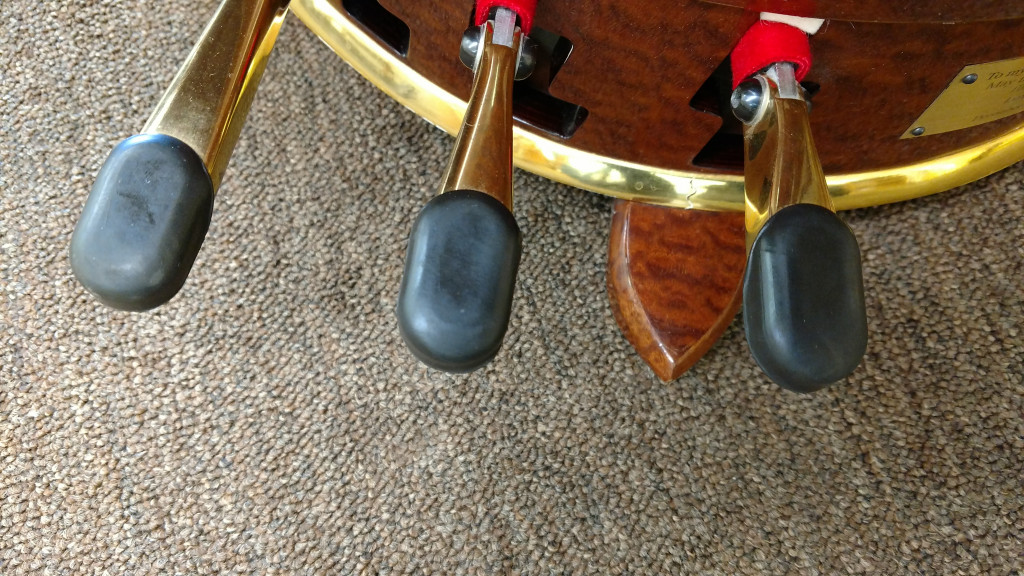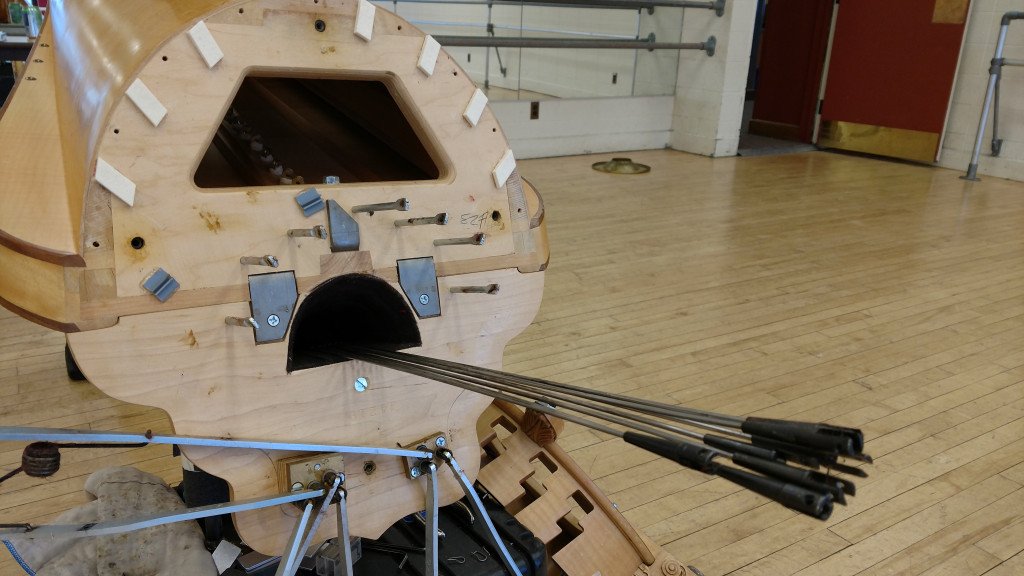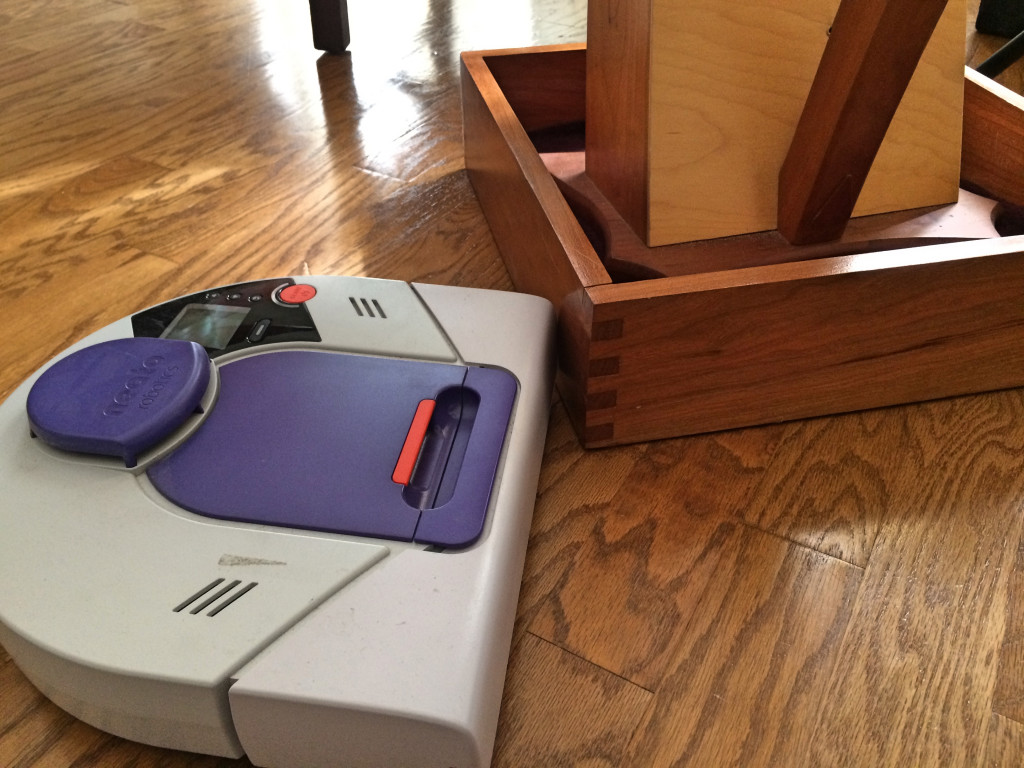When you make an appointment to have your harp regulated, there are three important things you can do to get ready. The first is to make sure your strings are in good condition, especially in the top two octaves. The second is to make a list of any specific problems you would like to see addressed. The third is to let your technician know in advance if you will want strings or other parts replaced.
Good String Condition –> Good Regulation
Over time and with use, harp strings wear away at the points where the discs of the mechanism (or the lever cams on lever harps) contact them. Strings that have been in heavy use for a year or more will often look like they’ve been chewed on, or even had a bite taken out of them, at those points. On thicker strings, from the third octave on down, this wear can affect the string’s tone, but generally doesn’t affect its ability to play in tune. In the top two octaves, however, the shorter string lengths mean that any change or damage to a string will have its effect multiplied. As the string wears away, the disc will grip the string less strongly. The string will tend to sound flat, and may even begin to snap.
These problems can be fixed by a regulation even if you don’t replace the strings, but there’s a problem. If I adjust your harp to sound in tune with old, worn strings, then they wear out or break and you replace them, their relationship with the discs will change, and they will likely sound sharp. That’s why, for the most accurate and durable regulation, I recommend replacing old or worn strings prior to your regulation.
Since strings take a while to stretch and settle, it’s best to replace them two weeks prior to the regulation appointment so they will be stable by the time you see your technician. If you miss that window, however, even one week prior is okay. I’d rather regulate your harp with new, slightly unstable strings than with those old clunkers.

When a string is in good condition, it can be gripped well by the discs, resulting in a clean sound and accurate intonation.

Worn away strings will not be gripped as well. They will be out of tune when you change pedal positions and will probably snap against the discs as well.
Be Specific
If there is a buzz or strange vibration in your harp that is bothering you, make a note of it, along with as much specific information as possible about conditions when it happens. Better yet, practice reproducing it. The best way to make sure I hear what you’re hearing is to be able to make it happen when you bring the harp in for service. If you make some written notes, you’ll be able to remember the pedal position, string, et cetera. I often have people give me vague information like, “there’s a buzz. I think it’s in the third octave somewhere. Or was it the fourth?” Having as much info as possible about what key you’re in and what string your playing when you hear the buzz will give me a greater chance to locate and troubleshoot it. There are many cases where a buzz will happen one one particular string and in one particular key. If I don’t set the pedals exactly the way you do and play the string the same way, I may not hear what you hear. Later on, when I’m headed back to Indiana and you play in that key again, you hear that the buzz is still there and you decide I’m a lousy harp technician. Neither of us wants that to happen!
Likewise, if you have a question or several about your harp, do yourself a favor and write it down. If I had a dollar for every time someone said “I know there was something I wanted to ask you but I can’t remember what it was” I could probably take a luxury cruise.
Plan Ahead
If you would like bass wires or pedal caps replaced, or if you have a disc that is broken, please let me know in advance. I can make sure I bring what you need, and schedule in any extra time that may be required to replace strings or broken parts. I try to keep spare parts on hand, but I’m limited to the amount of things I can cram in my luggage and the airlines limit the amount of weight I can carry, so I’m not prepared for every situation. I also only carry an emergency set of strings. If you’re not sure whether or not something will need replacing, feel free to ask me. I may need you to send a picture, or we might make a plan to have the part on hand just in case.
So there it is, your harp technician’s wish list. Paying attention to these issues will help you get the best possible regulation when the appointment time rolls around. Not only that, but you’ll make your technician’s day. Cheers!
Want to get great articles like this delivered to your email inbox? Join the mailing list now!












